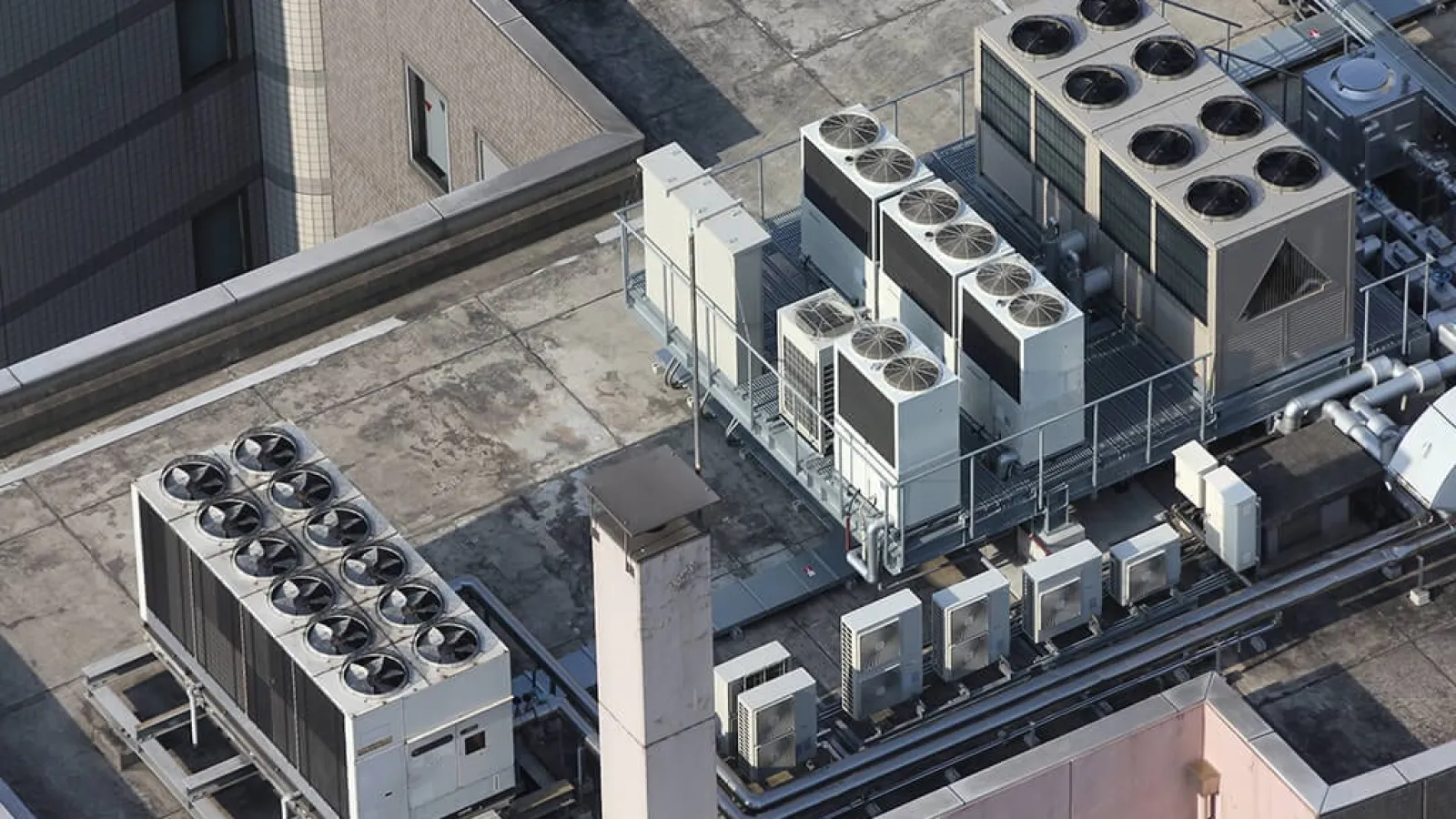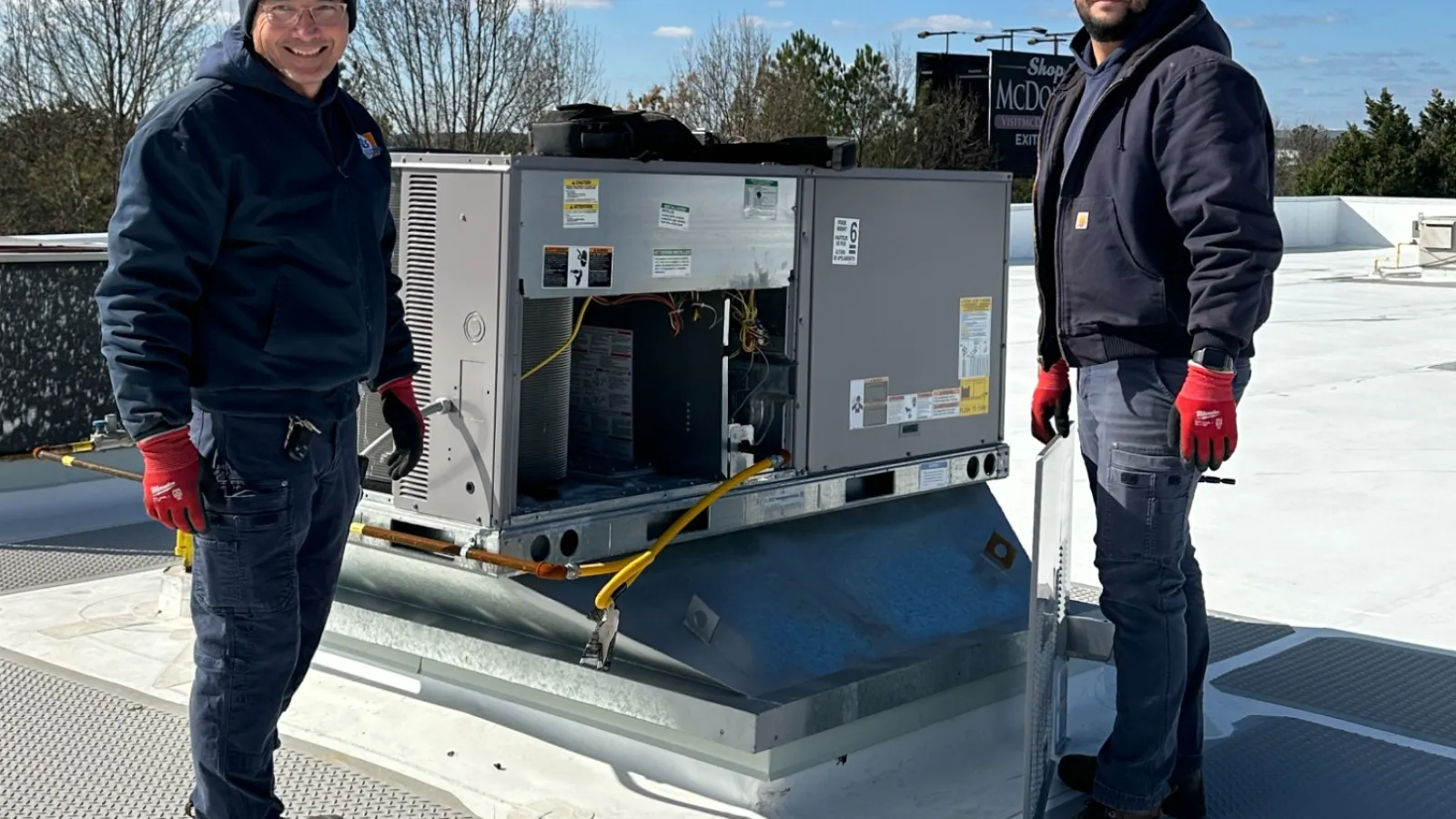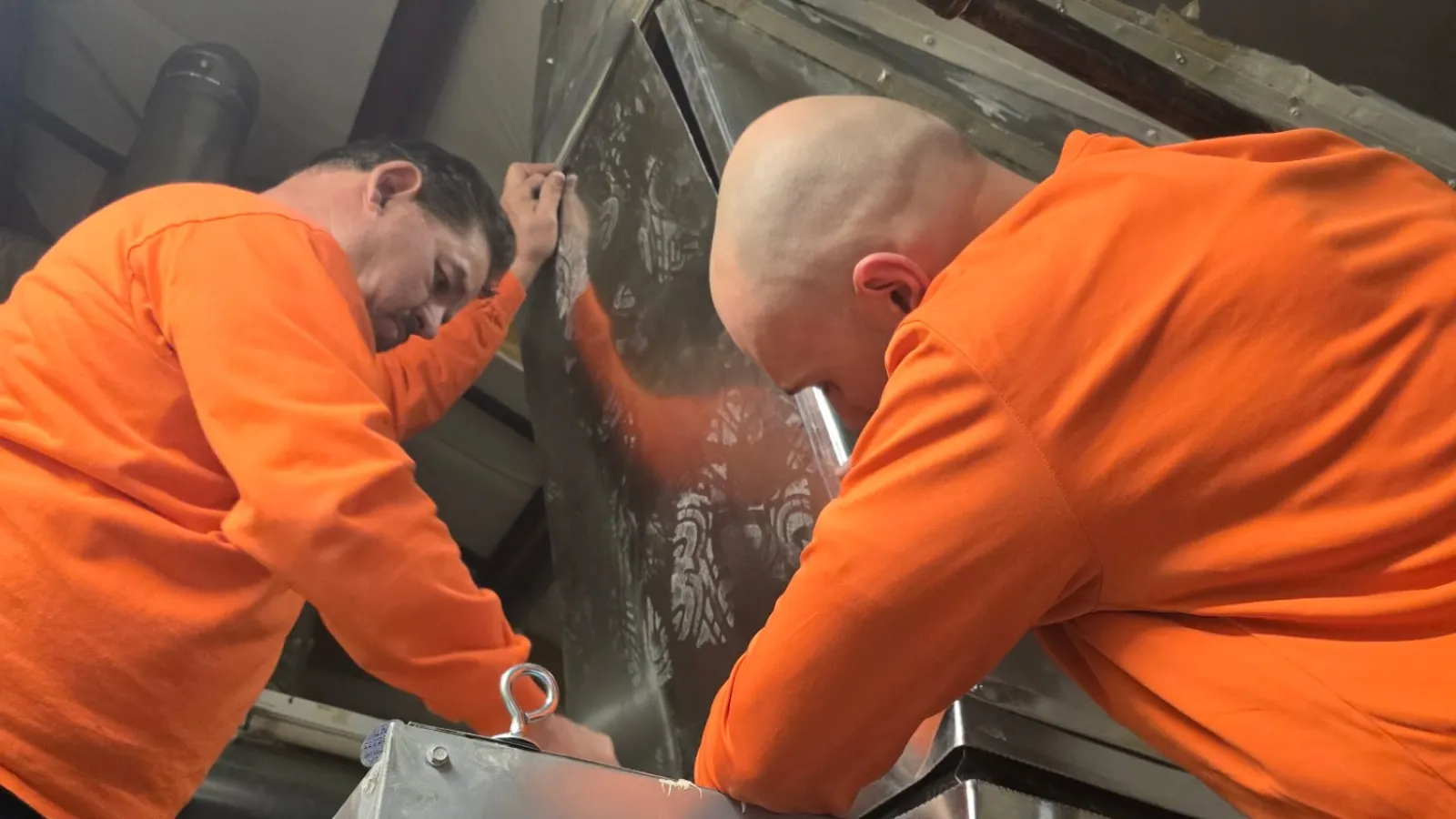Modern commercial air conditioning really hasn’t been around long, in the grand scheme of things. Developed out of necessity, HVAC innovators took the concept of cooling and went big – but they didn’t go home.
They brought commercial cooling into public buildings and business facilities, creating the modern systems we rely on today. Estes Commercial is proud to carry on the tradition of innovation when it comes to commercial air conditioning.
History of Air Conditioning
It’s a problem that’s been around forever. Wealthy Romans used the famed aqueduct system to circulate cool water through the walls of their homes. In the third century, the emperor Elagabalus literally imported a mountain of snow using donkey trains for his garden to keep cool.
The Chinese used hand fans as early as 3,000 years ago and in the second century, an inventor in China named Ding Huan built a hand-powered rotary fan to cool an entire room.
Do Fans Cool the Air?
Technically, fans do not make the air cooler. Instead, they speed evaporation of perspiration, which helps occupants feel cooler. Therefore, it’s unnecessary to run a fan in a room when no one’s there.
Building Design for Climate Control
For years, building a home meant strategic window placement to take advantage of cross breezes or to face away from the sun. Kitchens and other “hot” rooms were often set away from the main rooms of the house to keep potential fires or heat from spreading to other rooms.
Even now, passive solar design includes positioning a home or certain rooms toward certain directions, using specific materials to absorb or reflect the sun, and even landscaping. The choice of evergreen or deciduous trees and where to plant them, creates shade during summer months while allowing the sun’s warmth or as a wind break during winter months.
Image credit: Illinois State University
Commercial Air Conditioning Concept for Disease Control
The idea of commercial air conditioning was first brought to light in the 1840s. Cities were struggling with the spread of diseases such as malaria, which many believed were associated with high temperatures. Physician Dr. John Gorrie first proposed cooling cities as a preventive measure and invented a hospital room cooling system to improve patient comfort.
Dr. Gorrie was based in Florida, and shipping the ice needed for his cooling system was impractical and expensive.
Although his financial backer died before Gorrie could take his design further, he developed a system to create ice, made by a compressor using steam, water, horse or wind-blown sail power. This laid the ground for artificial cooling. While his invention was unsuccessful at the time, it did become the foundation for modern commercial air conditioning.
Carrier’s Commercial Air Conditioning Unit
In 1902, “the father of modern air conditioning” Willis Carrier developed the first modern electrical AC unit.
Inventor Nikola Tesla’s work on alternating current motors paved the way for oscillating fans. Carrier, at only 25 years old, sought to solve a humidity problem in a commercial publishing house. The rampant humidity was wrinkling the paper, disrupting the printing quality. Carrier’s system used cooling coils to heat water to add humidity to a building, or cooled water to provide dehumidification.
Twenty years later he invented a centrifugal chiller, which added a central compressor. This development reduced the cooling unit’s size. This made it more practical to control the climate in larger spaces. Carrier also developed and patented an automatic control system to regulate air temperature and humidity levels for the era’s textile mills.
As he developed these air treating inventions, Carrier saw his systems could benefit other industries by providing cooling and humidity control.
First Commercial Air Conditioning Systems in Public
The 1904 World’s Fair in St. Louis brought commercial air conditioning to the American public– the Missouri State Building was the first public building to use mechanical refrigeration for cooling.
Commercial air conditioning then made its way into other public facilities such as the theaters of the 1920s. Theaters became a refuge for patrons to keep cool indoors during the hot summer months due to their commercial air conditioning systems.
Theaters were a hotbed of commercial air conditioning development during the 1920s. The first commercial air conditioners created uneven and humid conditions with modified heating systems that distributed cold air at floor level, literally leaving movie lovers with “cold feet.”
Carrier recreated the theater cooling system, installing the first cooling system to distribute cool air at a higher level, providing better humidity control along with even temperatures at Los Angeles’ Metropolitan Theater in 1922.
Carrier also introduced a centrifugal chiller commercial air conditioning system at New York’s Times Square Rivoli Theater on a hot Memorial Day weekend in 1925. This system used fewer compressor stages and moving parts compared to earlier systems, delivering more reliability and lowering the cost of such systems, making them more accessible for commercial use throughout the United States.
Commercial Air Conditioning Efficiency Improvements
As the cooling industry advanced, American homes saw the first residential cooling systems, although the technology’s widespread use was a concern during the energy crisis of the 1970s. As a result, lawmakers passed laws aimed at reducing energy consumption.
This became the groundwork for the Department of Energy’s Appliance and Equipment Standards Program, which set a federal standard for commercial air conditioning energy efficiency.
Most recently, new regulations in refrigerants, multi-speed blower, and condenser fans, as well as building automation control systems, continue the evolution of commercial air conditioning history.
Ready to Evolve Your Commercial AC? Contact Estes Commercial Today
Commercial air conditioning has developed immensely over the years, bringing business owners innovative and energy efficient cooling solutions. Estes Commercial is ready to deliver the air conditioning solutions your business needs today – contact us to learn more.



